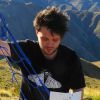Meet the team
About the project
Moths are underappreciated but essential and highly responsive parts of our ecosystem. AHI PEPE - MothNet: Identifying, Strengthening and Restoring Connections aims to engage the public and raise the appreciation of moths and explore their potential to act as ecological indicators of the health and connectedness of our natural world.
We hope to provide teachers, students and whānau with the skills, tools and connections to run a nationally significant scientific experiment. Employing internationally recognised moth-monitoring techniques to evaluate the effectiveness of vegetation restoration in restoring ecosystem function. Providing first-hand engagement with scientific thinking, processes and methods will enable participants to identify, strengthen and restore connections between their culture and science.
Funding
 AHI PEPE | MOTHNET is the third phase of MothNet funded by an 'Unlocking Curious Minds' grant from MBIE (Ministry of Business Innovation and Employment). This project grew out of a smaller Participatory Science Platform (PSP) 'Shedding Light on the Night: Nocturnal Biodiversity in the Otago region' project, also funded by MBIE.
AHI PEPE | MOTHNET is the third phase of MothNet funded by an 'Unlocking Curious Minds' grant from MBIE (Ministry of Business Innovation and Employment). This project grew out of a smaller Participatory Science Platform (PSP) 'Shedding Light on the Night: Nocturnal Biodiversity in the Otago region' project, also funded by MBIE.
 More recent funding has come from New Zealand's Biological Heritage National Science Challenge.
More recent funding has come from New Zealand's Biological Heritage National Science Challenge.
AHI PEPE | MOTHNET is a collaboration between Manaaki Whenua - Landcare Research, Orokonui Ecosanctuary, Ngāi Tahu, the Geography Department and Te Tumu (University of Otago) and the schools, teachers, students and communities from across the South Island that have joined the project.
Partners
-

Manaaki Whenua - Landcare Research
-

Orokonui Ecosanctuary
-

University of Otago
Scientists
Barbara Anderson
Barbara Anderson leads the MothNet project, and is a quantitative ecologist based at Landcare Research in Dunedin.
@tinkerbel405
Robert Hoare
Robert is an invertebrate systematist specialising in Lepidopteran (moths and butterflies) taxonomy. He has co-authored “A photographic guide to Moths and Butterflies of New Zealand” and the digital guide to the larger moths of New Zealand. He is featured on RadioNZ and ScienceLearning Hub videos. He brings to the project essential experience and expertise on moth taxonomy, systematics and identification.
Ralf Ohlemüller
Ralf is a lecturer in the geography department at the University of Otago. He researches climate change, biogeography and habitat fragmentation.
@GeographyOtago
Tangiwai Rewi
Tangiwai is a lecturer at Te Tumu, the School of Māori, Pacific & Indigenous Studies at the University of Otago. Her research interests include te reo me ngā tikanga Māori, Māori Education and Māori Pedagogy.
Victoria Campbell
Victoria leads the development of the immersion Te Reo resource placing our Beginners’ Guide series in a specifically Ngai Tahu cultural context. Consulting with kaumātua, the wider community and relevant literature to research the Whakapapa and stories associated with pepe.
Tiahuia Kawe-Small
Tiahuia is principal at Te Kura Kaupapa Māori o Ōtepoti.
Tahu MacKenzie & team
Tahu Mackenzie is the Educator at Orokonui Ecosanctuary.
@NZEcosanctuary
Janice Lord
Janice is a plant evolutionary biologist at the University of Otago with interests in plant reproductive strategies and traditional uses of plant by Māori. Janice took part in Phase 1 of MothNet, Shedding Light on the Night.
Students
 Max Buxton
Max Buxton

Max is investigating the role of moths as pollinators on mainland and sub-Antarctic New Zealand. This is being done by documenting moth-plant associations (using the presence of pollen on moth bodies as a proxy for pollination) and by measuring how well moths transfer pollen between flowers.
Max is an MSc student at the Botany Department, University of Otago, co-supervised by Barbara Anderson and Janice Lord.
 Sean Gilles
Sean Gilles

Sean is a graphic designer, illustrator and mixed media artist currently studying at Otago Polytechnic, and developed the illustrations on the Beginners' Guides to Macro Moths. You can find his blog and all his other works at @sean.william.g on Instagram
 Steff Barak
Steff Barak

Steff is investigating the effects of artificial light on nocturnal Lepidoptera. Which type of street lighting least impacts urban moth populations in Dunedin?
Involve your school
If you would like your school to be involved or more information about the Ahi Pepe | MothNet project contact
mothnetotago@gmail.com
03 470 7206 (Dr Barbara Anderson - Landcare Reasearch)
andersonb@landcareresearch.co.nz
Shedding Light On the Night
The Ahi Pepe | MothNet project emerged from the “Shedding Light on the Night” project.
The Shedding Light on the Night project is a partnership between Landcare Research, the Botany and Geography Departments of the University of Otago, Orokonui Ecosanctuary, and a collection of Otago schools Funded by the Ministry of Business Innovation and Employment's Curious Minds Participatory Science Platform – Otago Pilot initiative.
Beginners’ Guide to the Macro-Moths of Otago
In addition to the work with schools within Otago the Beginners’ Guide to the Macro-Moths of Otago was produced by Landcare Research for the Shedding Light on the Night project. The overall text, content, and design, by Drs Barbara Anderson and Robert Hoare, are part of the ongoing research into the ecology, distributions, and ecological interactions of Lepidoptera in the Otago region included in the Coastal, Alpine and Montane Biotic Interactions research programme. The moth illustrations are by Birgit Rhode, Landcare Research, based on specimens in the NZAC. Line drawings are by Lily Burrows. We would like to thank Brian Patrick for help in compiling the list of species for inclusion.
The Beginners’ Guide to the Macro-Moths of Otago is freely available for download in a variety of printing formats. It has a Creative Commons BY NC ND license which means you can download it and use it but you can't sell it or change it.








